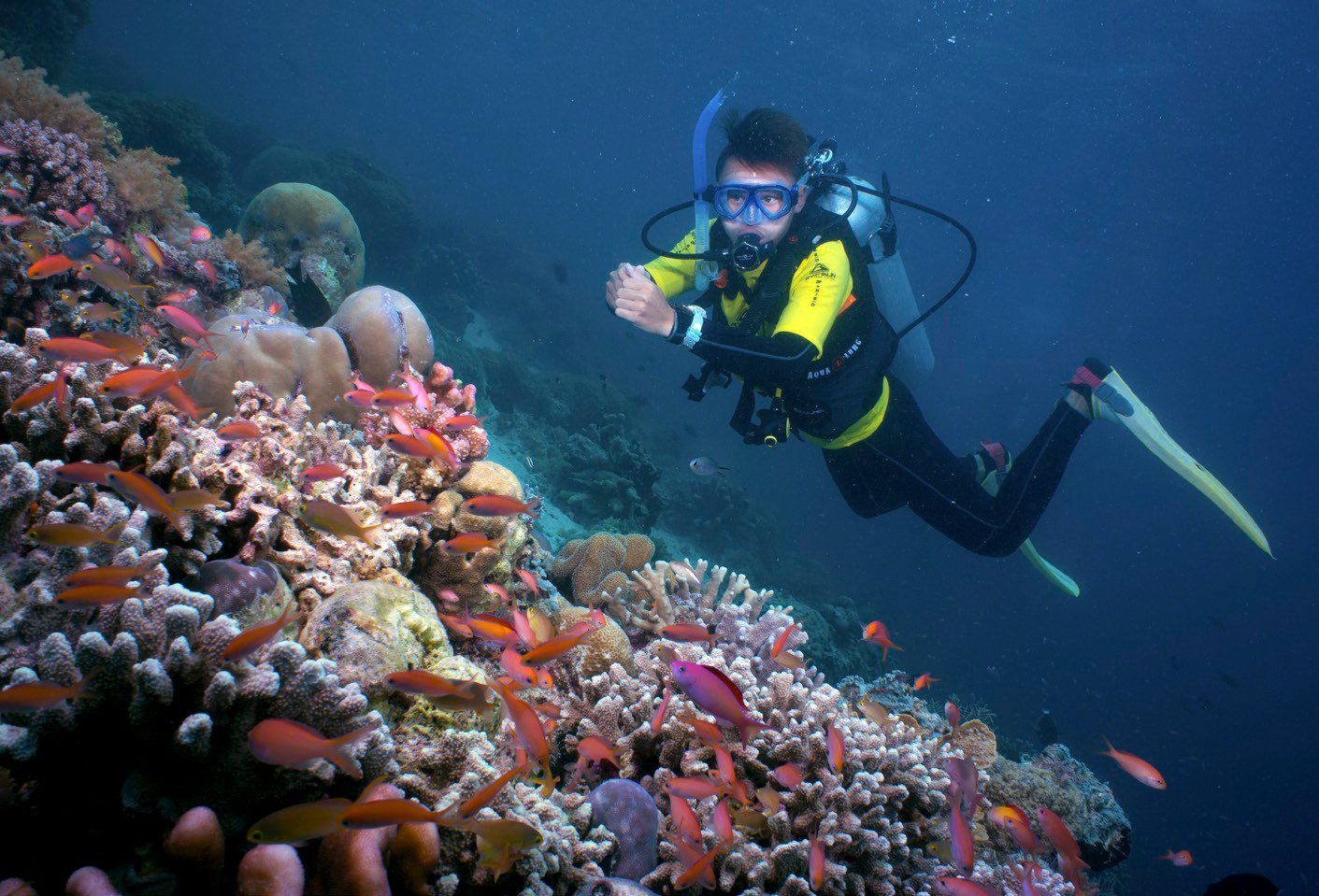As Ocean Day approaches, we present a travellers’ guide to protecting Sabah’s seas and reefs.
Introduction: Responsible Travelling to Sabah
Have you, like many around the world, started tapping away at your laptop for places to visit, relieved that some sense of normalcy to international travel has resumed and dreaming of finally taking that trip you started planning years ago? Do you key in terms like ‘island getaways’, ‘dive sites’ and ‘marine life’ into Google, or do a search on Instagram using the hashtags #beach, #ocean and #nature?
Did you know?
Sabah is a Malaysian state occupying the northern part of the island of Borneo. It’s famed for its 4,095-metretall Mount Kinabalu, the country’s highest peak, crowned with distinctive granite spires. Sabah is also known for its beaches, rainforest, coral reefs and abundant wildlife, much of it within parks and reserves.
If so, don’t forget to add this tag to your list – Sabah. With 4,500km of coastline (inclusive of islands and lagoons), Sabah has much to offer with its pristine beaches and enchanting underwater life. But as a global citizen affected by the prevailing impacts of climate change, you need to ask yourself – and this is our last question, I promise – how do my travel plans impact the ocean? And then, you have a choice to make.
As Ocean Day approaches, we urge you to dig deeper as you make plans on where to go and what to do. Be a responsible traveller. Learn about the communities whose lives are so intricately woven with the resources of our seas. Understand why making harsh judgements about the way they put food on their tables does nothing to bring solutions that protect our precious marine life, and then find out what does. Lend a hand in preserving both our rich marine biodiversity and the intangible aspects of Sabah’s culture, all while ticking items off your must-see list of ocean species and marine animals. Here’s a short list to get you started.
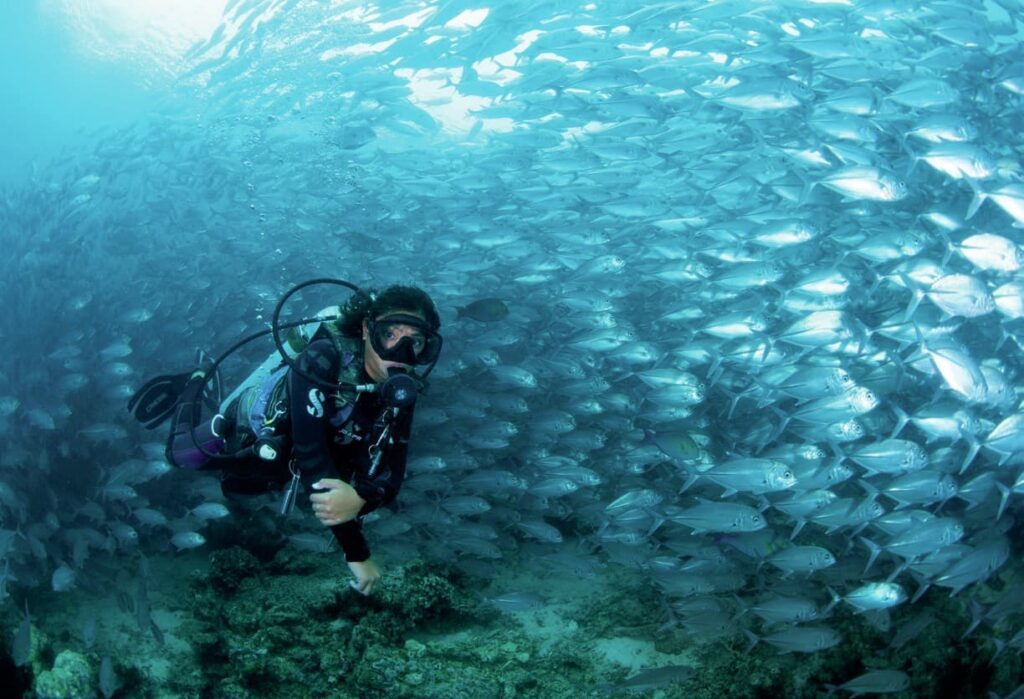
1. Restore giant clams, restore the reefs at Tunku Abdul Rahman Park
A visit to Tunku Abdul Rahman Park gives you the perfect chance to get your feet wet if you’re not planning to venture far from Sabah’s capital. TARP is a cluster of islands that dot the waters off the mainland of Kota Kinabalu and on its largest – Gaya Island – is MERC, the Marine Ecology Research Centre. An award-winning environmental education site, visitors to the centre can participate in an hour-long guided tour, or spend a full day with a marine biologist, learning firsthand about producing and restoring giant clams, and understanding their ecological significance to our reefs.
2. Become an EcoDiver at Mantanani Island
Although it’s a bit of a journey to Mantanani (an hour and a half by car from Kota Kinabalu, followed by another hour by boat), its pristine turquoise waters and stunning natural beauty makes it well worth the trip. Tourism grew rampantly on the island and while this opened up additional opportunities for its inhabitants to earn an income, the need for initiatives integrating tourism, conservation and community development became extremely apparent. Reef Check Malaysia’s projects on Mantanani aim to enhance community livelihoods through capacity building and skills training, improve their wellbeing through waste management, and create awareness on the benefits of preserving the reefs.
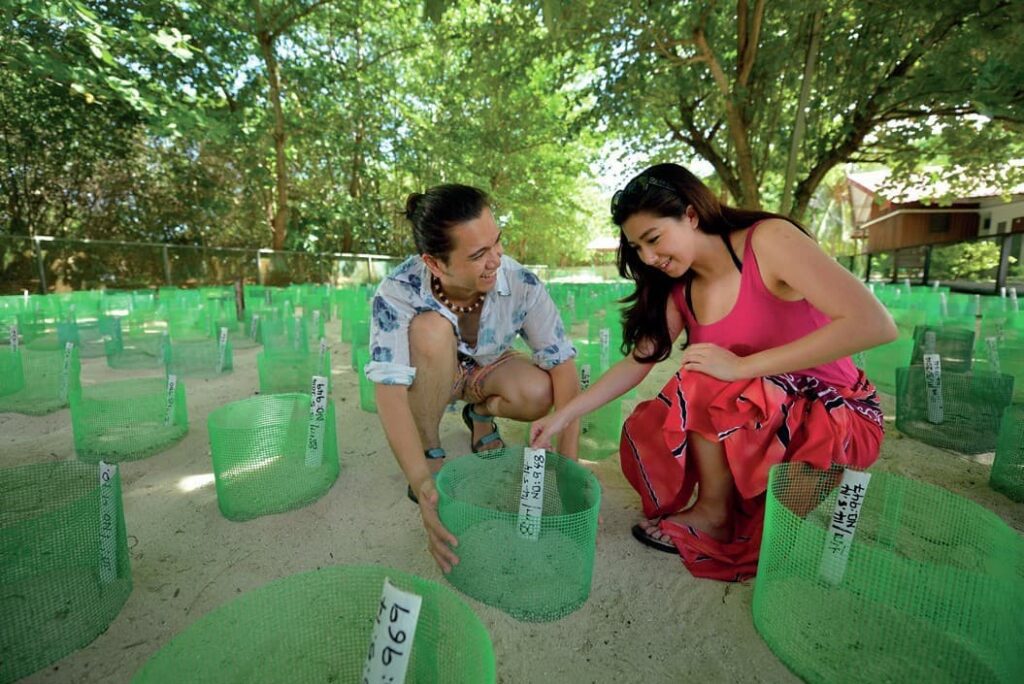
3. Support women’s efforts in product diversification
In many parts of the world, women play a critical role in managing natural resources and the same rings true of island communities in Sabah. Just look to the north in the multi-use marine protected site of Tun Mustapha Park, where a group of women have banded together to work through LA’NU, a registered entity that produces soap from used cooking oil. Not only are they supplementing their primary source of income, thus reducing their dependence on income from fish, these women are also channelling a percentage of their profits towards conservation activities run by their communities.
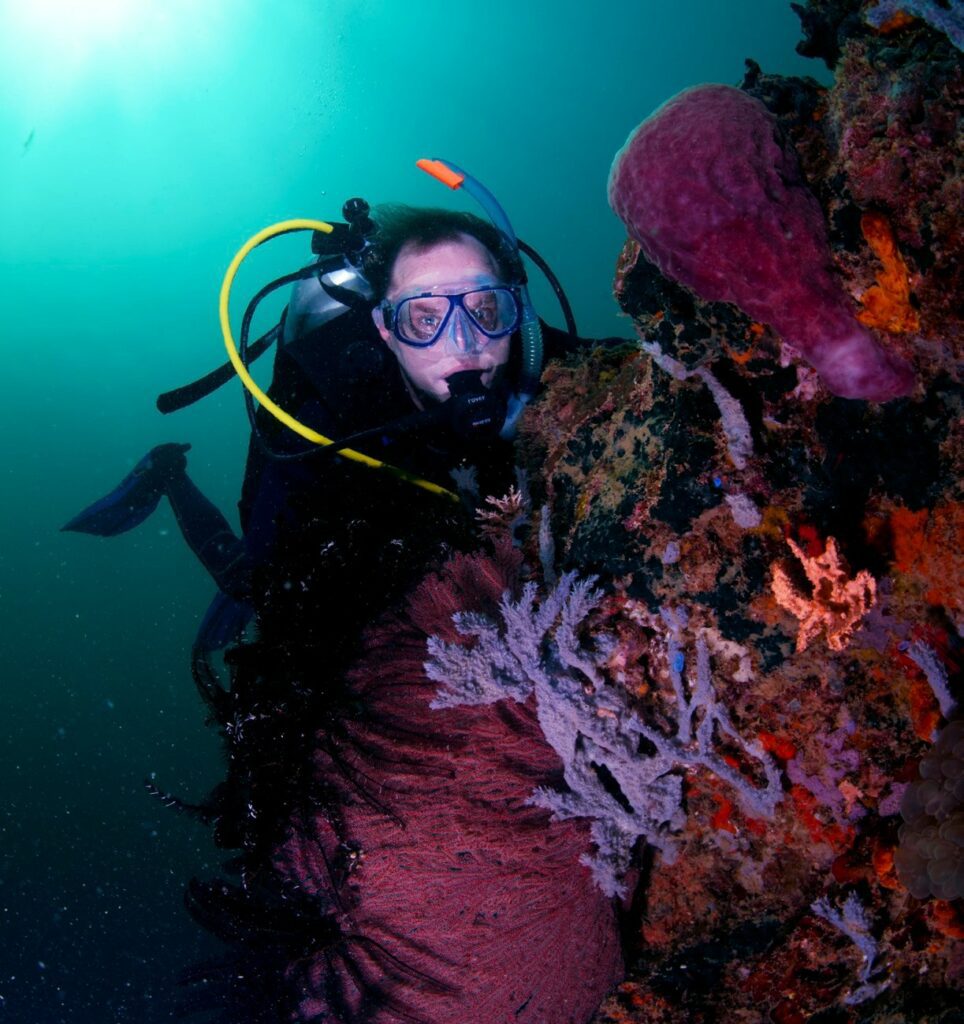
Similarly, off Semporna, the small town on the southeastern coast of Sabah known as the gateway to dive haven in Sabah, members of Women of Omadal (WAPO) strive to improve their income security, while promoting environmental awareness and protection. The association was registered in 2012 with support from WWF-Malaysia and till today, members continue to actively produce and promote handicraft, having revived weaving traditions using leaves from the pandanus palm, and exploring new designs and products to broaden their handicraft offerings. WAPO also has a dedicated unit that patrols the beaches of Omadal Island to deter turtle poaching activities.
4. Join Green Semporna for environmental conservation initiatives
Located just 20 minutes from the internationally-known Sipadan Island is Mabul, a dive destination that attracts both international and local divers intrigued by rare and unique macro critters. Unfortunately, the high number of tourists drawn to its shores and waters put ecological pressure on the island, making it crucial to increase the island’s resilience towards the ever growing demand on its resources and climate change.
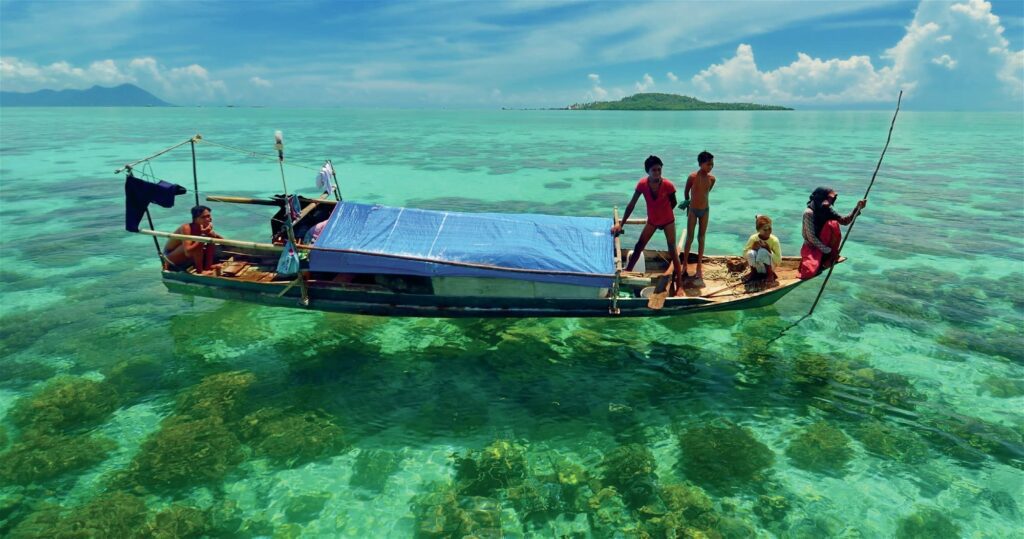
Recognising this, Green Semporna was created as a platform to empower the youth and local community to engage in a range of environmental conservation initiatives. Volunteers actively rehabilitate corals, improve their leadership skills through training, learn the art of film-making to share their community stories, seek solutions to Mabul’s water shortage issues, and more!
5. Restore coral reefs off Semporna with TRACC
Approximately 30 kilometres northeast of Semporna is Pom Pom Island, the base for the Tropical Research And Conservation Centre, or TRACC, an organisation dedicated to protecting sea turtles and restoring damaged coral reefs. Programmes run by TRACC range from two weeks to over four months and can include activities such as creating artificial reefs to restore ecological functionality, conducting scientific research and surveys to gain a holistic view of the marine environment, removing crown-of-thorns starfish to allow damaged reefs to survive and grow, and much more. A stellar programme if you’re keen on actively restoring reefs, and if you’re not yet a certified diver, TRACC offers PADI courses to get you going.
Did you know?
Clownfish are not great swimmers. They mostly hide in anemones, and when they do venture out, their swimming patterns are very erratic. They eat dead anemone tentacles, plankton, molluscs, zooplankton, phytoplankton, small crustaceans and various algae.
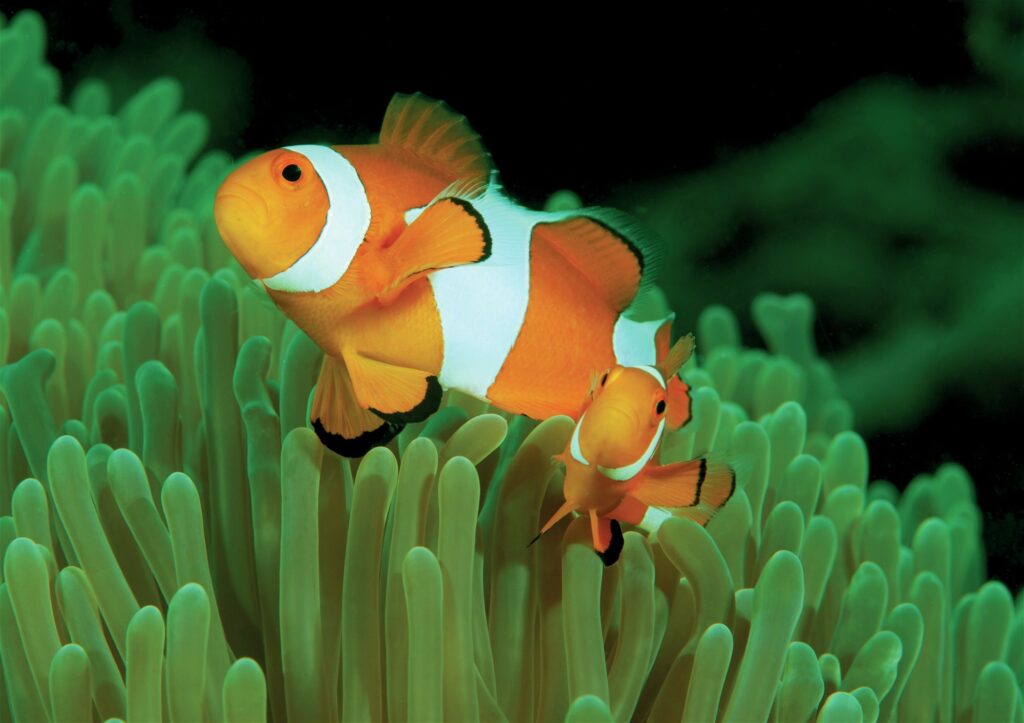
6. Visit a Marine Protected Area: Sugud Islands Marine Conservation Area
Last, but not least, is Sugud Islands Marine Conservation Area, a site on the east coast of Sabah comprising the islands of Lankayan, Billean and Tegapil. SIMCA is privately managed by Reef Guardian, whose ultimate aim is to balance the needs of tourism and conservation. Dedicated teams monitor turtle nesting activities, promote turtle conservation awareness amongst its visitors and carry out reef surveys to monitor the health of the reefs. In addition, the enforcement of fishing restrictions allow fish populations to thrive, both within and beyond the boundaries of the conservation area.
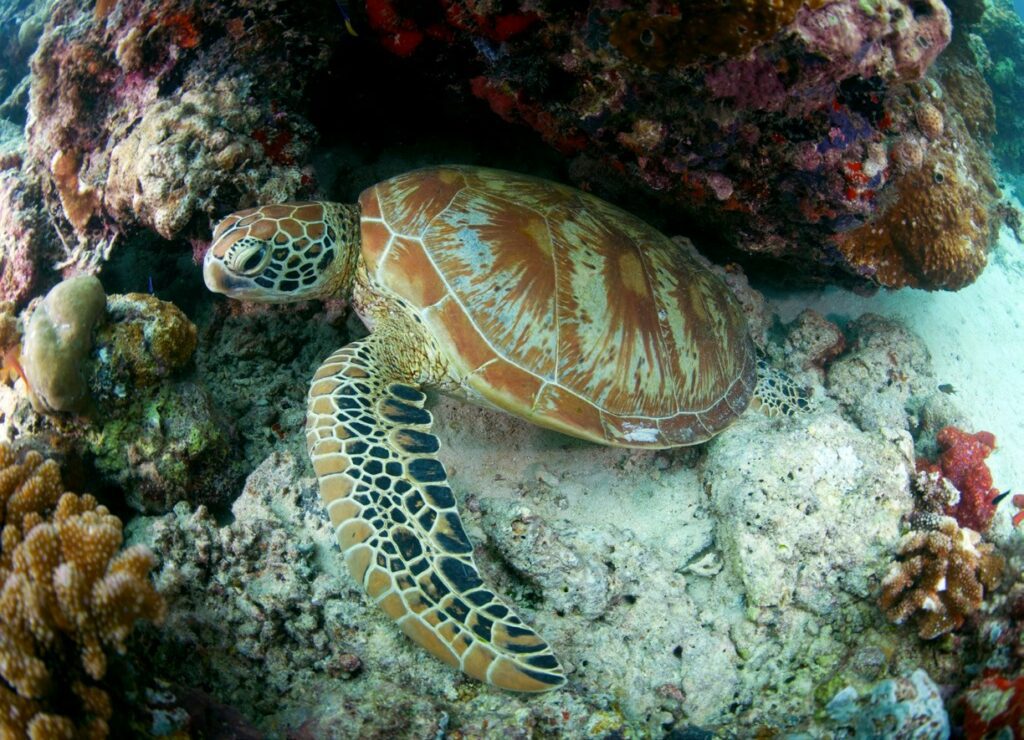
You might also be interested to know that close to SIMCA is Turtle Islands Park, a marine park gazetted in 1977. Visitors to Selingan Island, one of the three islands that form the park, are fortunate to see turtles nesting on a daily basis and have the opportunity to participate in their Turtle Adoption Programme.
In summary
It’s in your hands. No action is too small. No effort goes unappreciated. Adapting the age-old saying, apart from your footprints, we invite you to leave a positive impact on our reefs. And no, we’re not suggesting that you step on our corals! See you in Sabah.
Photographs by MERC, Reef Check Malaysia, Norcy BeautyLab, Roziah Jalalid/WAPO, Green Semporna, Robin Philippo/TRACC Borneo, Achier Chung/Reef Guardian and Gavin Jolis/WWF-Malaysia
This article was originally published in Scuba Diver ANZ #51
Subscribe digitally and read more great stories like this from anywhere in the world in a mobile-friendly format. Link to the article
